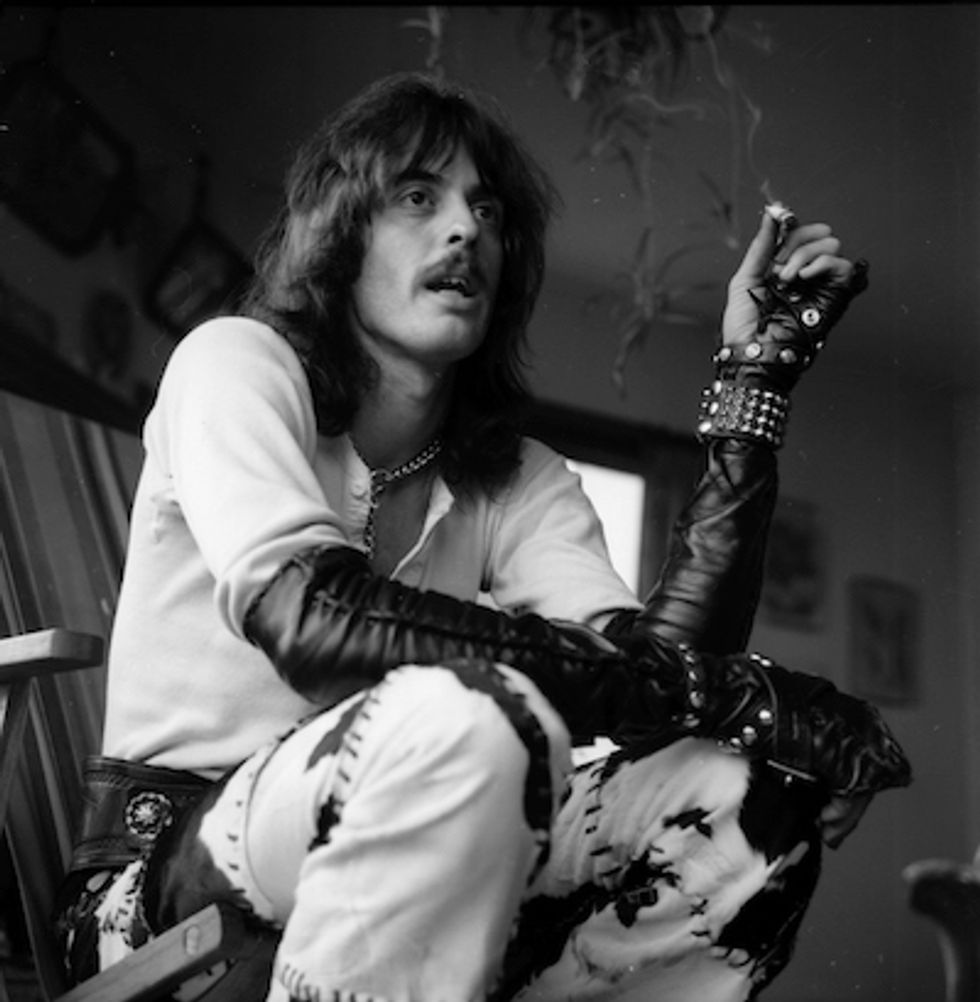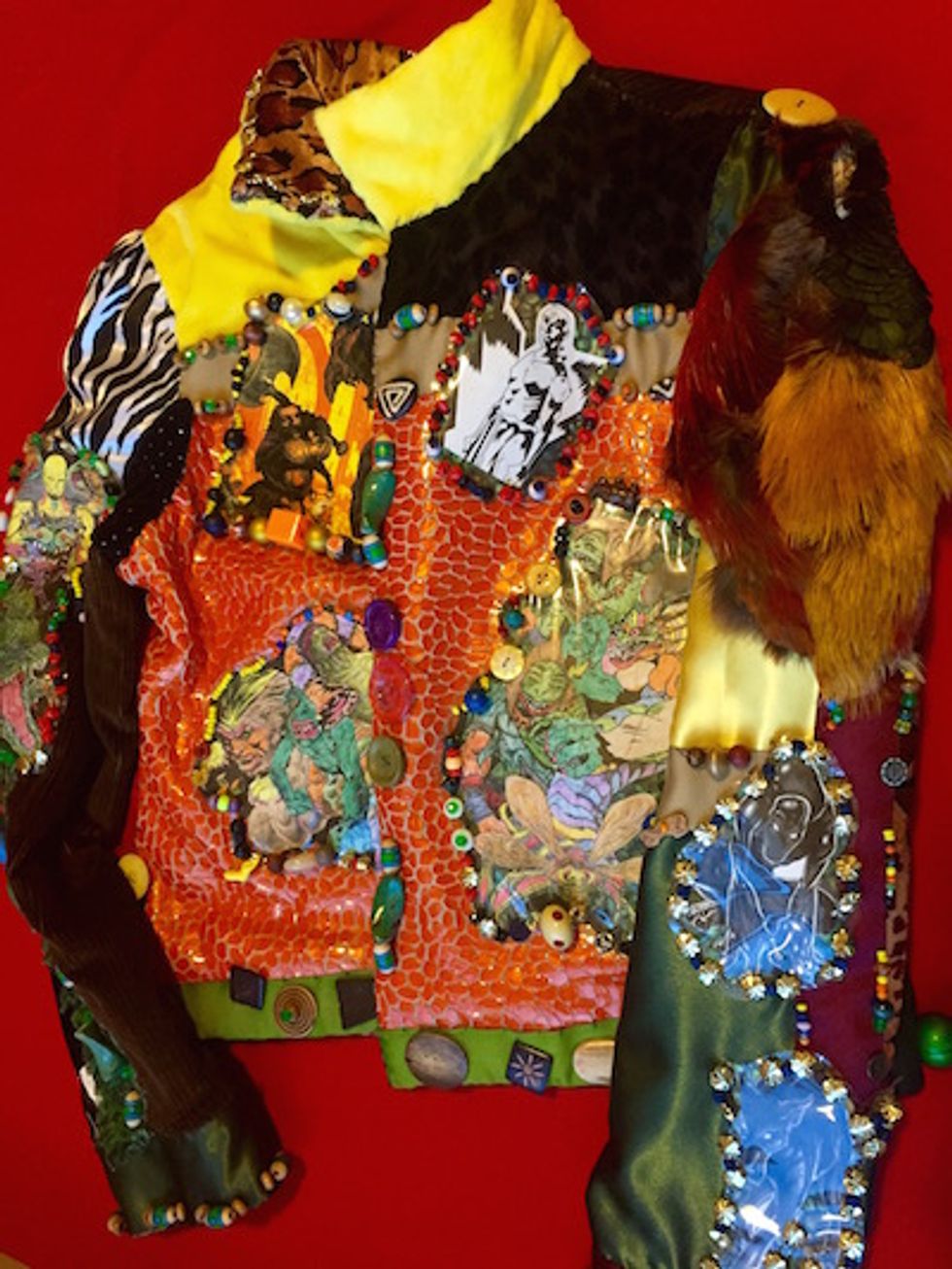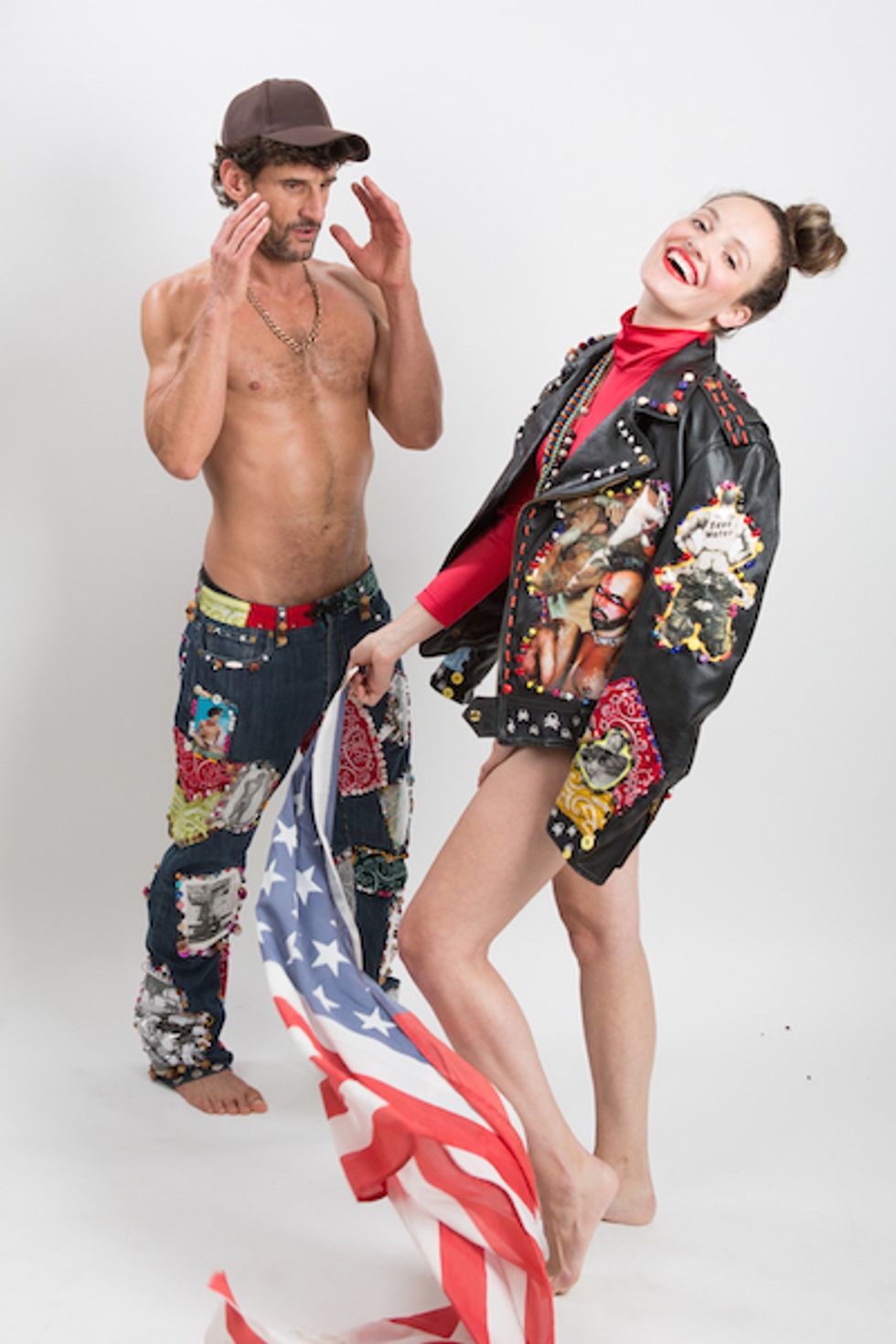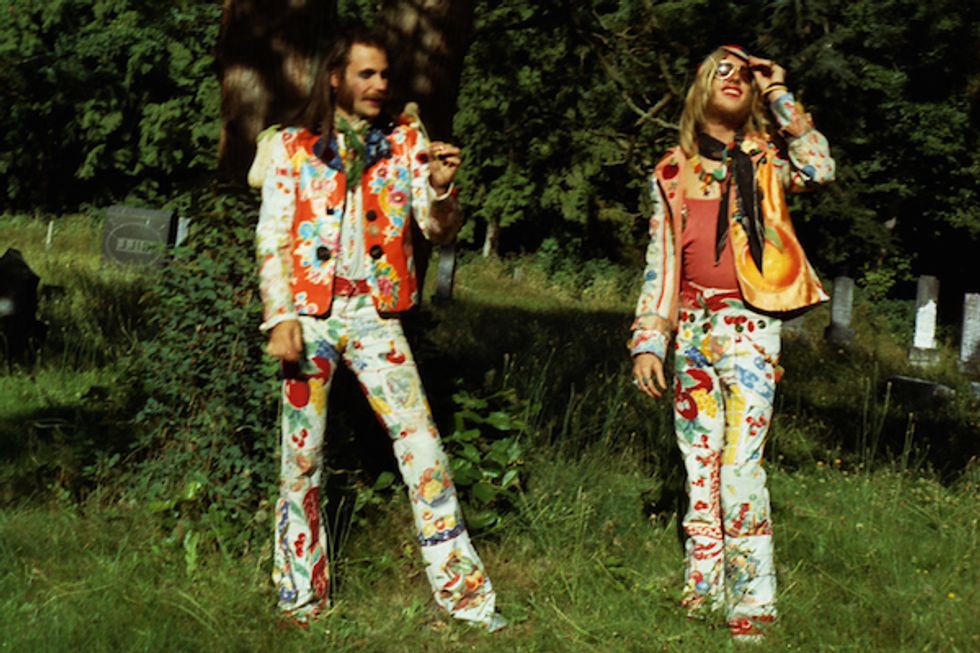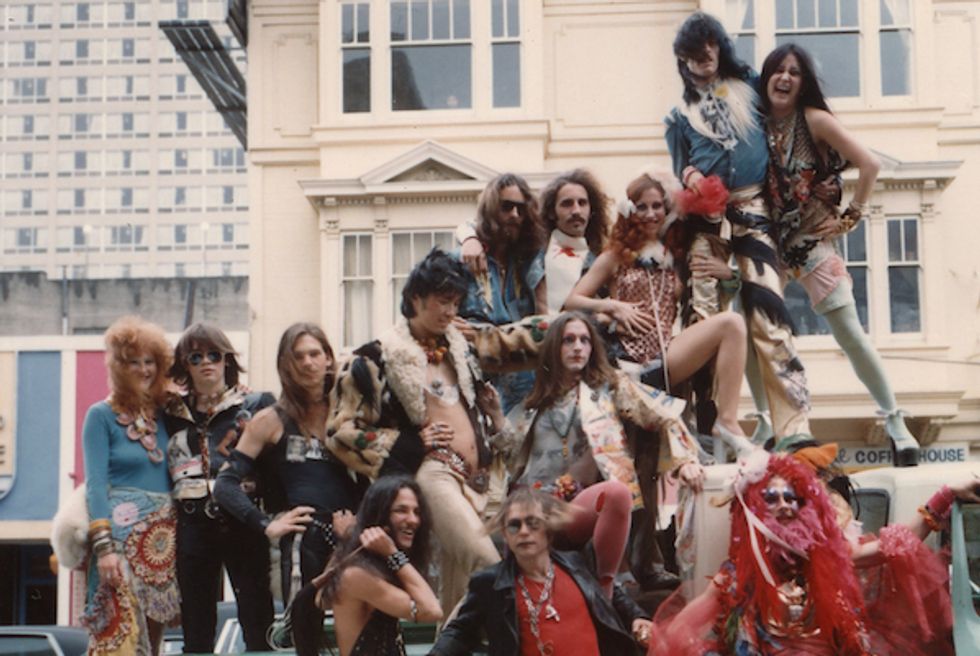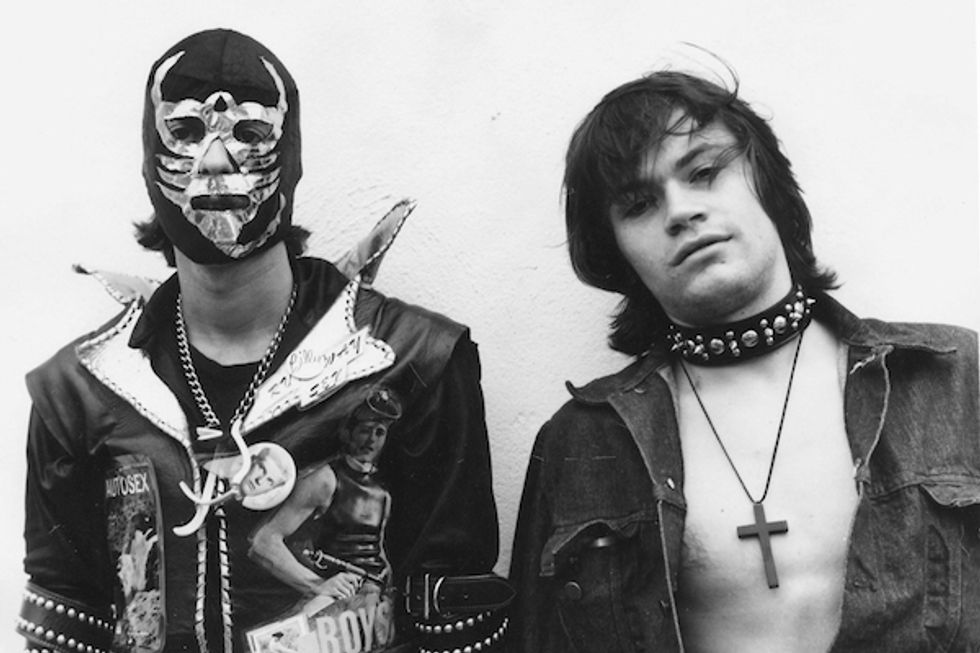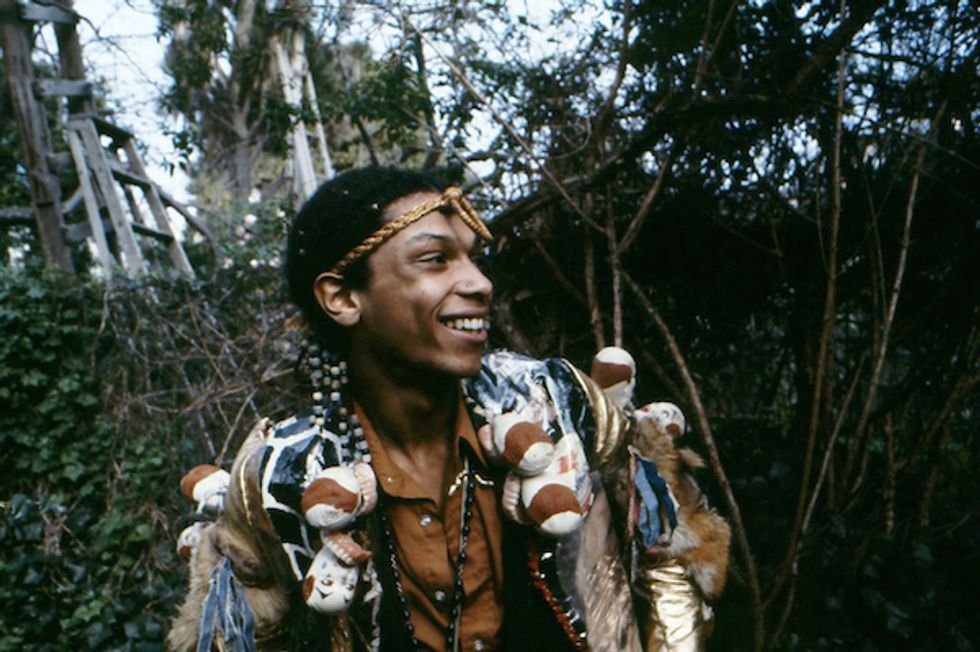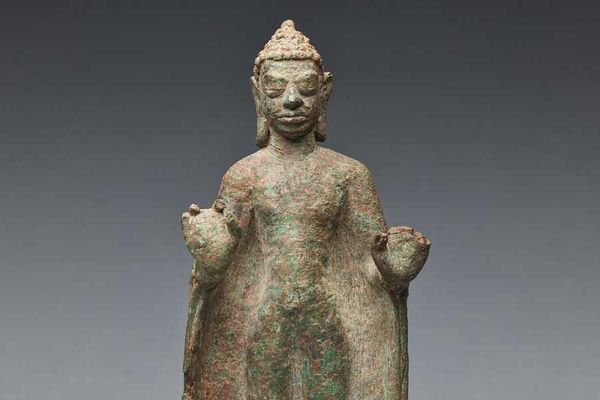Why don't more people know Billy Bowers? Not only did he foster the Bay Area-born funk-and-flash arts movement of the 1970s, he also dressed the Rolling Stones, Led Zeppelin, Aerosmith, New York Dolls, and Alice Cooper—all in outrageous phantasmagorical costumes that incorporated found imagery, cash money, and even taxidermy rats. This month, Billy Bowers is back on the scene with a show of new works, The Success of Excess: The Art of Billy Bowers, on display at Valencia Street's Glama-Rama.
Back in March 1973, L'Uomo Vogue published a six-page photo feature on Bowers' designs, staged at Andy Warhol's factory, no less. Playboy, in its 20th anniversary edition, showcased one of Bowers’ cartoon-inspired jackets. Norma Kamali, Betsy Johnson, and Fiorucci all featured his work in the 1970s, as did New York stores Bonwit Teller and Granny Takes a Trip. For Bergdorf Goodman, Bowers produced a line of wraparound muslin skirts, which he hand-etched with rubbings of actual graves in Boston's Granary Burial Ground. Bowers costumed members of the notorious San Francisco drag troupe the Cockettes, too, and even dressed a scene in That Boy, the classic underground “art film” starring '70s gay-porn icon Peter Berlin.
(Billy Bowers, in 1974, smoking a joint and wearing his then-signature handmade three-quarter-length leather gloves. "God, I wore those gloves for years!" he remembers. "I even took 'em to Florida, where I had to shed my leather.")
So how could one as celebrated as Bowers almost have been forgotten by San Francisco? For starters, everyone had thought him dead, and why wouldn't they? He barely survived drugs in the 1980s, then AIDS in the 1990s, then heart and lung disease in the 2000s. On those rare occasions Bowers appeared publicly, he looked so ghostly that nobody imagined he could possibly survive another year.
But somehow, he has survived—even thrived. Now 68, he continues to make groundbreaking new work, ever busy creating in his Hayes Valley apartment.
Billy Bowers' story is as much one of fast success in New York as it is of longevity in SF. He began his illustrious career dressing members of the Cockettes, with whom he traveled to New York for their disastrous 1971 Broadway debut. As the Cockettes bombed, Bowers' star rose. But he hated New York winters and stayed only, as he put it, "until I got icicles in my moustache and said, 'I gotta get outta here, Girl!' It didn’t matter how many Quaaludes I had. It was cold!”
(Cockette Reggie models the Autosex jacket for a photo shoot in a Bay Area BART station that was interrupted by BART police. Reggie was arrested for public obscenity and prostitution thanks to the zipper on his pants, which ran from his waistline to hemline. Photo: Wendy Mukluk)
And so, he returned to San Francisco to join the Angels of Light, the avant-garde drag theatre group that broke away from the Cockettes, and devoted his life to making public art for free. Then came the death years of the 1980s when, like so many other gay artists, Bowers dropped off the radar.
He's a blast to talk with, especially when thumbing through his giant scrapbooks, and nobody tells better stories. Like why, in 1969, Bowers and soon-to-be disco-star Sylvester—along with future Cockettes Goldie Glitters, Dusty Dawn, Reggie, and Wally—all left Los Angeles at the same time. Bowers had been a go-go dancer at the Whisky A Go-Go, but as he tells it, L.A. "became a police state" after the Mason murders, and "the Hollywood freaks on the Sunset Strip were all getting busted." So they packed up their glitter and moved north to SF.
And then there's the story about Salvador Dali. When Alice Cooper sat for a portrait by the artist, he wore a cape and top hat crawling with giant white taxidermy lab rats, their jaws biting into lacquered black bats. "They were still wet and their fur kept coming off as I sewed them," remembers Bowers. As the story goes, Dali acquired both garments and later wore them in New York, reputedly claiming credit for their design.
Or how Cooper once commissioned Bowers to make a jacket of money to wear to a charity ball hosted by Rose Kennedy. Mr. Cooper provided the artist with 150 one-dollar notes, which Bowers sealed beneath plastic onto the body and sleeves. Mrs. Kennedy later reportedly complained that Mr. Cooper had worn money, but donated none.
Not everyone has failed to notice Bowers' enduring presence and cultural significance on the San Francisco underground. The Oakland Museum of California holds in their permanent collection three of Bowers' jackets, one currently on view in the main gallery. And New York City's National September 11 Memorial and Museum has acquired Mr. Bowers Twin Towers jacket.
(Bowers' Sci-Fi Freaks jacket, featuring cartoon monsters, is one of the new works on display this month at Glama-Rama Salon & Gallery.)
Thrillpeddlers, the marvelous SF theater company that mounts Cockettes revivals, engaged Bowers to make costumes for Pearls Over Shanghai, which in 2014 earned him a Theater Bay Area award for outstanding costumes. A new biography of his life and work, The Success of Excess (Averkieff, Edition One Books, 2015), has just been released.
And now you've a chance to meet the artist firsthand, and possibly score your own piece of San Francisco fashion art history: Bowers will debut several dozen new works, including a dozen signature art jackets—among them Sex Pistols, Disneyland, Sci-Fi Freaks, and Wizard of Oz—at his upcoming show at Glama-Rama. Prices range from about $100 for small wall hangings to $2,500 for jackets. Bowers will be in attendance at the opening reception (Saturday, February 13, 7:30pm to 10:30pm), alongside a handful of old stars from the glory days of the San Francisco scene. // The Success of Excess: The Art of Billy Bowers, Feb. 9 through Mar. 20, Glama-Rama Salon & Gallery (Mission), glamarama.com
John Vlahides is a San Francisco writer—notably for the viral essay Why Not to Take Sleeping Pills on an Airplanes—and a classical singer with the Grammy Award–winning SF Symphony Chorus.
(The author and Bowers' informal archivist John Vlahides, wearing dungarees entitled Felated, with Jennifer Gabrielle, who wears Watersports, porn-based designs available by appointment with the artist.)




